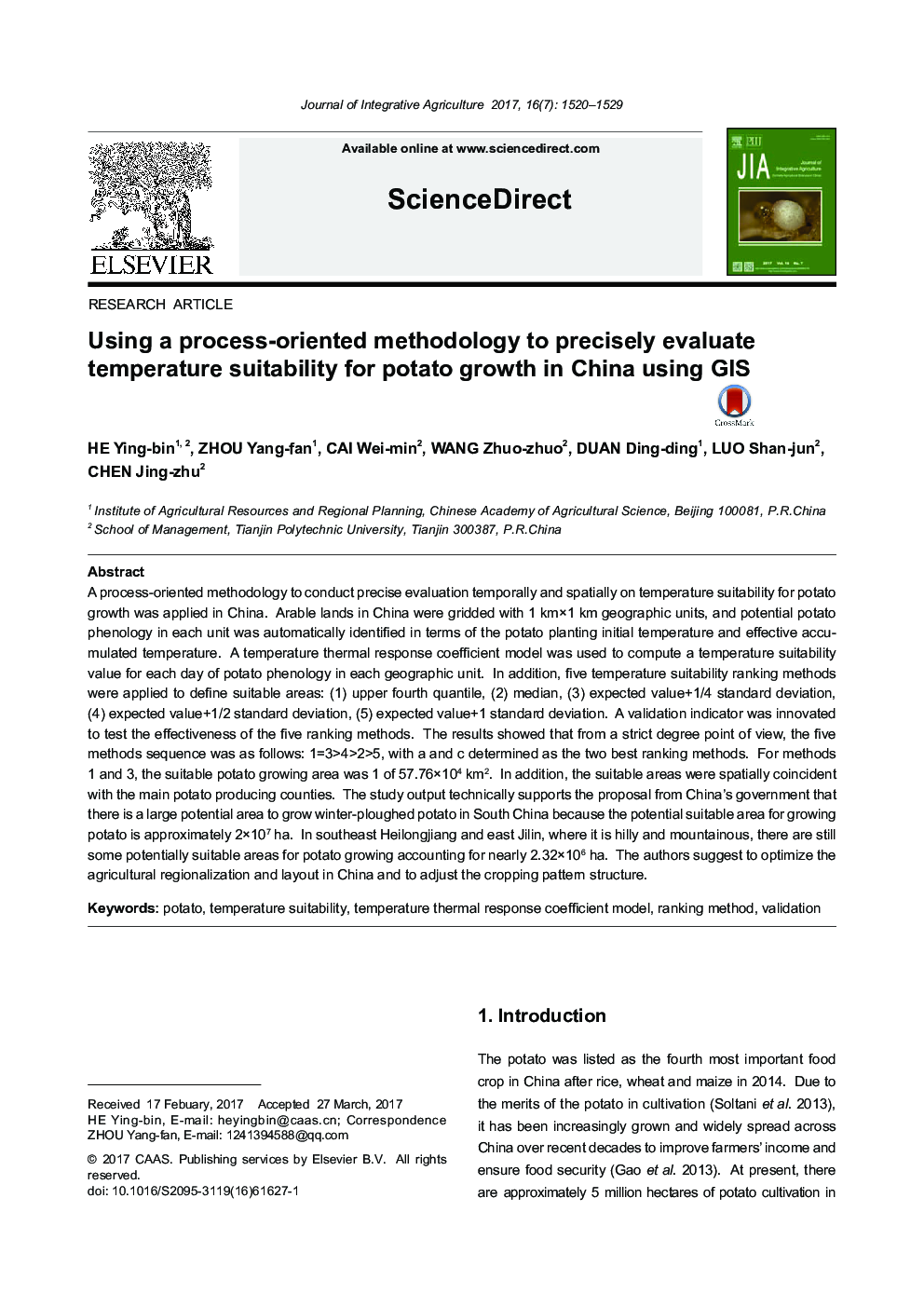| Article ID | Journal | Published Year | Pages | File Type |
|---|---|---|---|---|
| 8875933 | Journal of Integrative Agriculture | 2017 | 10 Pages |
Abstract
A process-oriented methodology to conduct precise evaluation temporally and spatially on temperature suitability for potato growth was applied in China. Arable lands in China were gridded with 1 kmÃ1 km geographic units, and potential potato phenology in each unit was automatically identified in terms of the potato planting initial temperature and effective accumulated temperature. A temperature thermal response coefficient model was used to compute a temperature suitability value for each day of potato phenology in each geographic unit. In addition, five temperature suitability ranking methods were applied to define suitable areas: (1) upper fourth quantile, (2) median, (3) expected value+1/4 standard deviation, (4) expected value+1/2 standard deviation, (5) expected value+1 standard deviation. A validation indicator was innovated to test the effectiveness of the five ranking methods. The results showed that from a strict degree point of view, the five methods sequence was as follows: 1=3>4>2>5, with a and c determined as the two best ranking methods. For methods 1 and 3, the suitable potato growing area was 1 of 57.76Ã104 km2. In addition, the suitable areas were spatially coincident with the main potato producing counties. The study output technically supports the proposal from China's government that there is a large potential area to grow winter-ploughed potato in South China because the potential suitable area for growing potato is approximately 2Ã107 ha. In southeast Heilongjiang and east Jilin, where it is hilly and mountainous, there are still some potentially suitable areas for potato growing accounting for nearly 2.32Ã106 ha. The authors suggest to optimize the agricultural regionalization and layout in China and to adjust the cropping pattern structure.
Keywords
Related Topics
Life Sciences
Agricultural and Biological Sciences
Agricultural and Biological Sciences (General)
Authors
Ying-bin HE, Yang-fan ZHOU, Wei-min CAI, Zhuo-zhuo WANG, Ding-ding DUAN, Shan-jun LUO, Jing-zhu CHEN,
